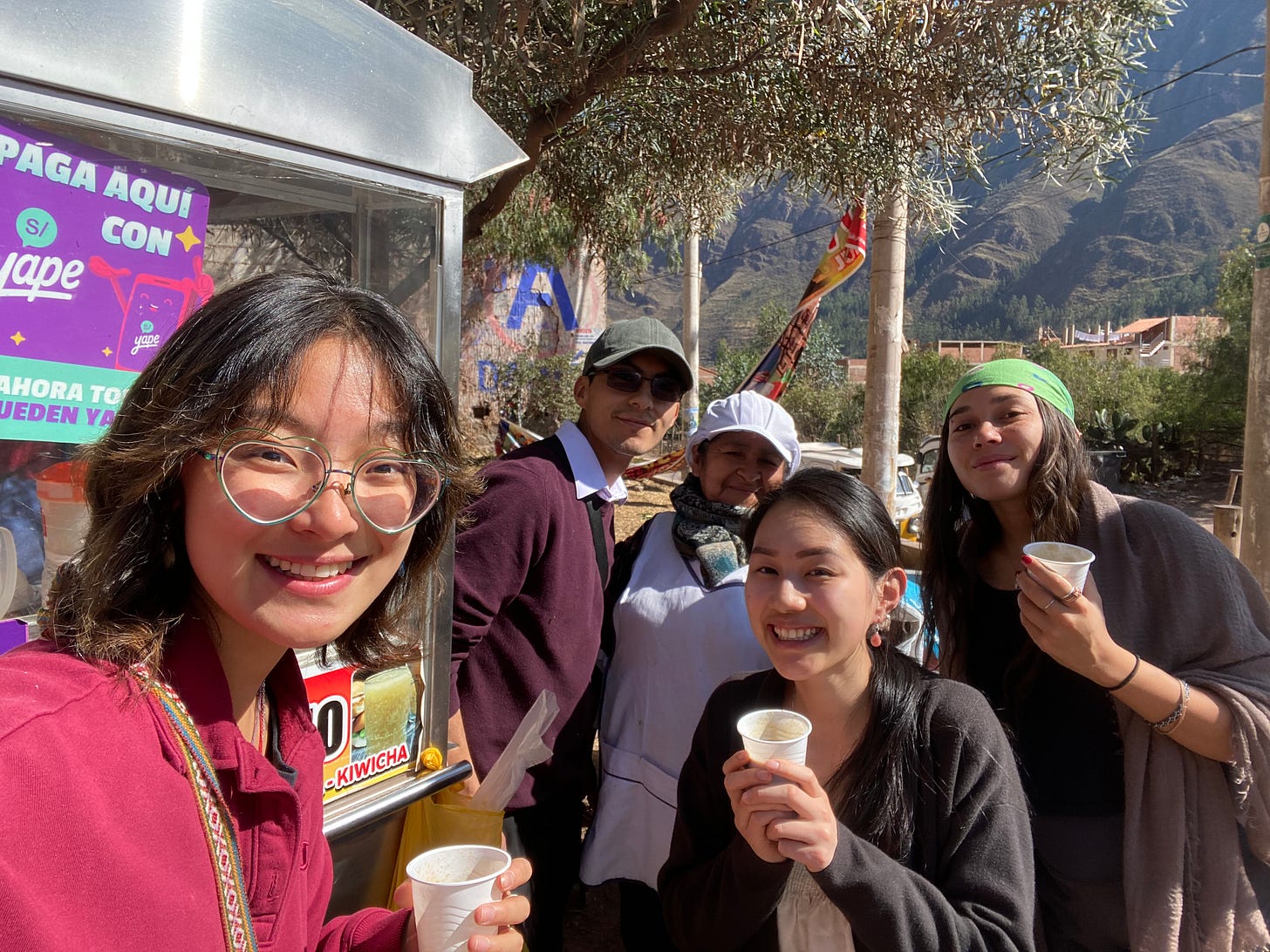Week 6: Week 6: Inti Raymi and Our Friends From Pisac
My last experience blog (for class :)
Our last full week in Peru has been very exciting! Many of us were ecstatic to be back in Cusco for Inti Raymi, which is the REAL highlight of the entire program. When we first arrived in Cusco I was stunned to see the volume of street vendors that arrived in town specifically for the Inti Raymi festival. From the foot of our hotel, all the way to the Central Mercado about 8 blocks away the streets were teeming with vendors and their merchandise. The sudden influx of vendors reminded me of the theme of mobility in our texts such as Andean Lives and We the Indians were individuals and families are in constant search for economic opportunities. I’m sure a majority of the vendors came from outside of Cusco, because as soon as the Inti Raymi festival was over, the streets leading up to the Central Mercado were almost barren.
I’m always impressed with how clever and opportunistic the vendors are, it was entertaining seeing the vendors we usually see in the streets around the Plaza de Armes on the path to Sacsayhuaman as they were ready to serve the audience members for the Inti Raymi festival. The Inti Raymi festival was beautiful, although it felt much more performative than I initially anticipated, the story that was told and the choreography felt very harmonious. In Caroline Dean’s book Inka Bodies, she discussed how Inti Raymi provides a time when all Peruvians could be royal Incas and contemporary mestizos elite clothed themselves as Incan royals. Being Incan is described to be a proud and transient state. There seemed to be a lot of pride and honour on display, you could tell that most of the individuals in the main Inti Raymi festival at Sacsayhuaman were honoured to be there as they were very intentional with their movements and had exuberant expressions.
Another highlight of the week was, of course, returning to Pisac! Pisac has truly felt like our home in Peru and it is always a pleasure to see the staff again. Estibens/Steven introduced us to Maca, a traditional Andean drink made of Maca root that somewhat resembles chocolate milk. Today after breakfast we went to his mother’s stand where she sells juice and sandwiches every morning from 5:30 AM to around 9:30 AM. By the time we arrived at around 9:30 AM, Fucunda (Steven’s mother), had almost finished selling her sandwiches and juice. Steven informed us that she leaves early in the morning because there is too much competition later in the day. I was amazed to see how hard they all work and how supportive the vendors were of each other as they buy each other's products and help each other find change. Their reciprocity and collectivism truly demonstrate the root of Andean culture. It was also beautiful to see Steven helping take over his mother’s stall when she had to step away for a moment whether it was to grab change or buy produce from a vendor. Overall, I feel incredibly lucky to have been able to immerse so deeply in such a rich and beautiful culture and am so grateful for all the people I’ve encountered on this journey.




"Their reciprocity and collectivism truly demonstrate the root of Andean culture." I've really enjoyed reading your blogs Emily. I feel like a lot of the beautiful connections you have made on this trip is due to your friendliness and care for others. Where some people may shy away, you go out of your way to build relationships with others. I think going to Fucunda's fruit stand meant a lot to Estiben.
Hi Emily, your interaction with Steven's mom is so heartwarming I can't even!!!! "Their reciprocity and collectivism truly demonstrate the root of Andean culture" I totally agree, what a wonderful way to see that in action.